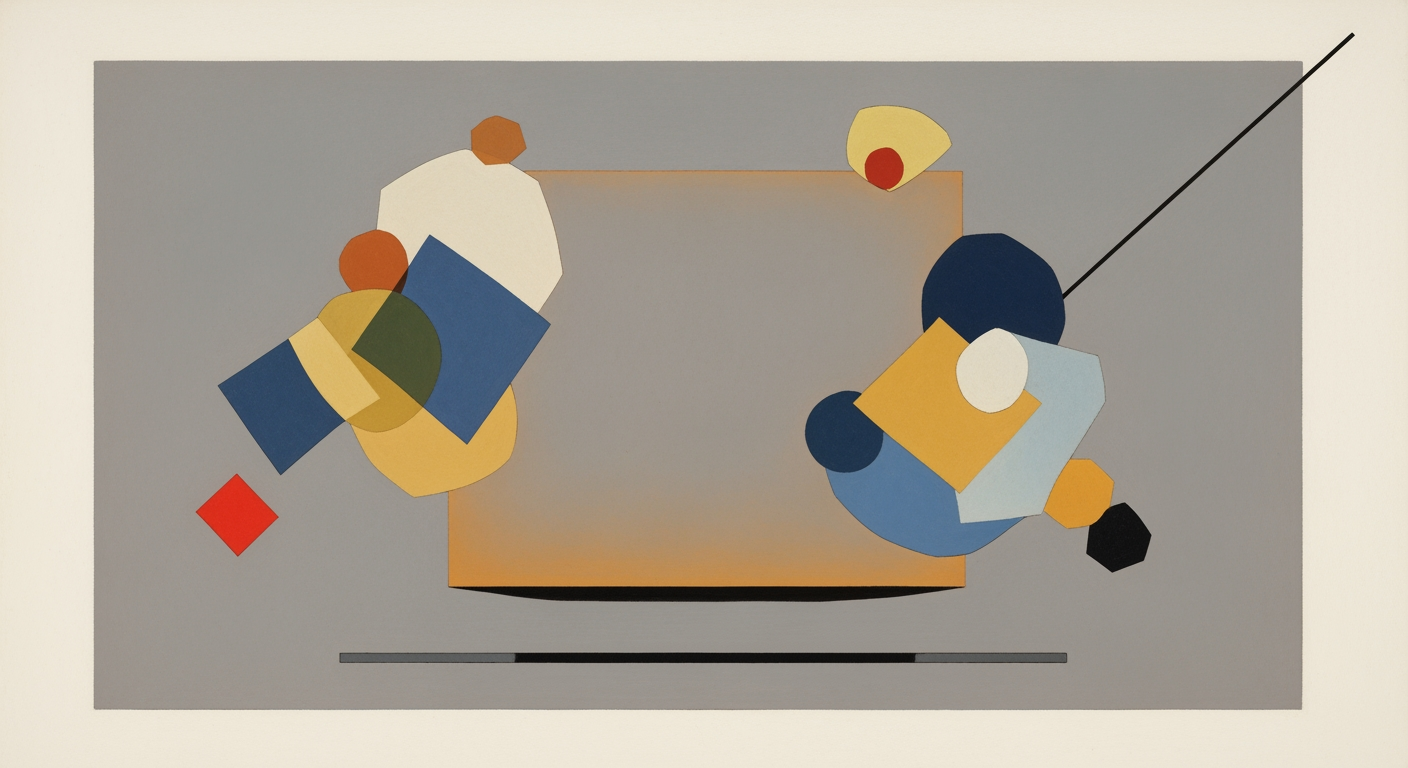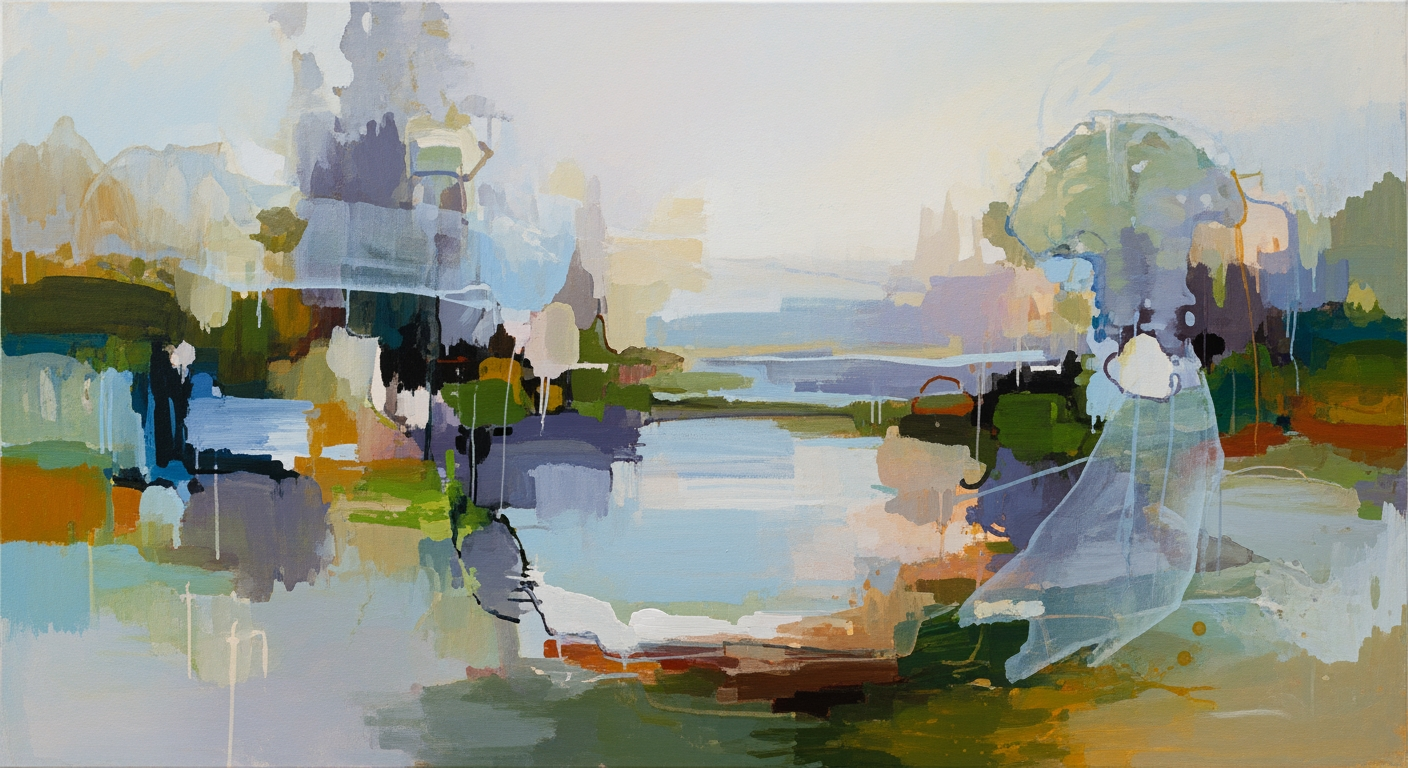Introduction: Li Dazhao and the trajectory of modern Chinese philosophy
Li Dazhao (1888–1927) pioneered 李大钊马克思主义中国化, bridging modern Chinese philosophy and 中西文化 through Marxist adaptation, influencing the Communist movement and intellectual legacy.
Li Dazhao (1888–1927), a pioneering thinker at the nexus of late-Qing reform and revolutionary socialism, served as a crucial bridge between intellectual renewal in the waning years of imperial China and the early development of Communist theory, embodying the sinification of Marxism that reshaped modern Chinese philosophy. Born in Hebei province, Li emerged as a key intellectual during the tumultuous early 20th century. He studied law and political economy in Japan before returning to China, where he became the chief librarian and a professor of political science at Peking University in 1918. In this role, he mentored future leaders like Mao Zedong and collaborated with contemporaries such as Chen Duxiu, co-founding the Chinese Communist Party in 1921. His activism extended to writing influential essays in periodicals like New Youth (新青年), where he advocated for radical social change. Tragically executed by warlord forces in 1927, Li's life encapsulated the perils of revolutionary thought in a fractured republic.
Li Dazhao's intellectual contribution lies in his conception of 'Marxism sinification' (李大钊马克思主义中国化), which involved adapting Western Marxist doctrines to China's unique historical, cultural, and social contexts, including its agrarian economy and Confucian heritage. In seminal works like 'My Marxist Views' ('我的马克思观,' 1919) and essays in La Jeunesse, he argued for integrating Marxist materialism with Chinese traditions, emphasizing peasant mobilization over urban proletarian focus and viewing socialism as harmonious with mid西文化 (中西文化) synthesis. This approach contrasted with rigid orthodoxies, promoting a dialectical engagement that anticipated Maoist innovations. Immediately, Li's ideas galvanized the May Fourth Movement and the Communist founding, inspiring underground networks and ideological debates. His lasting scholarly significance endures in modern Chinese philosophy, as evidenced in primary sources like the Collected Works of Li Dazhao (李大钊文集) and analyses in Peking University archives, CNKI databases, and English monographs via Harvard-Yenching and JSTOR. Li matters profoundly for demonstrating how global ideologies localize, ensuring Marxism's relevance in non-Western settings and influencing ongoing discourses on cultural adaptation in revolutionary thought.
Context: Modern Chinese philosophy, East–West cultural encounter, and modernization
This analytical section maps the late Qing and early Republican intellectual landscape that influenced Li Dazhao's development, highlighting East-West cultural exchanges (中西文化), modern Chinese philosophy (近现代中国哲学), and intellectual enlightenment (思想启蒙) through reform movements, the New Culture Movement, and Western political ideas.
In the late Qing dynasty and early Republican era, China grappled with profound crises of sovereignty and identity, spurring intense intellectual ferment. The failure of the Self-Strengthening Movement (1861–1895) and the 1895 Sino-Japanese War exposed the inadequacies of traditional Confucian governance, prompting reformist calls for modernization. By the 1910s, the Republican Revolution of 1911 dismantled the imperial system, yet political fragmentation under Yuan Shikai and subsequent warlords deepened disillusionment. This vacuum facilitated the influx of Western ideas, mediated through Japanese translations and direct European imports, shaping debates in modern Chinese philosophy (近现代中国哲学). Key currents in East-West exchange included liberal constitutionalism, social Darwinism, and emerging socialist thought, with Chinese intellectuals encountering Marxism primarily via Japan's Meiji-era adaptations and Russian revolutionary literature post-1917.
The New Culture Movement (1915–1921), launched with the founding of New Youth magazine in 1915 by Chen Duxiu, opened space for Marxist ideas by vehemently critiquing Confucian tradition and advocating 'Mr. Science' and 'Mr. Democracy.' This cultural iconoclasm, culminating in the May Fourth Incident of 1919, dismantled barriers to radical ideologies, allowing Marxism to gain traction as a tool for national salvation amid Versailles Treaty betrayals. Li Dazhao, as Peking University librarian from 1918, was pivotal in this milieu; PKU, reformed under chancellor Cai Yuanpei in 1917, became a hub for intellectual enlightenment (思想启蒙), hosting diverse thinkers and fostering cross-cultural dialogues.
Translation and Editorial Infrastructures for Marxism's Spread
Translation and editorial infrastructures were crucial enablers. Japanese intermediaries, like those translating Marx and Engels in the 1900s, filtered ideas into Chinese via works such as Kawakami Hajime's renditions. In China, Shanghai's Commercial Press and Minsheng Publishing House, active from 1919, disseminated primary translations, including Li Dazhao's 1919 essays on Marxism in New Youth. Archival newspapers like Shenbao (申报) and Peking University's journals amplified these, creating a print culture pipeline. This network, blending university seminars and periodical debates, propelled Marxist thought from niche to mainstream by 1925, countering liberal and anarchist alternatives.
Modernization Debates, Interlocutors, and Rivalries
Modernization debates framed the demand for new ideologies, pitting gradual reform against revolutionary upheaval in the context of East-West cultural encounters (中西文化). Li Dazhao's interlocutors included ally Chen Duxiu, co-founder of the Chinese Communist Party in 1921, and Hu Shi, a liberal pragmatist advocating Deweyan gradualism. Rivals encompassed anarchists like Li Shizeng and Wu Zhihui, who promoted mutual aid over class struggle, and nationalists like Liang Qichao, favoring constitutional monarchy. These interactions, evident in New Youth polemics, synthesized print culture, university networks, and international translations into a dynamic arena for intellectual enlightenment (思想启蒙). For primary sources, see translations in New Youth archives; major scholarship includes Vera Schwarcz's The Chinese Enlightenment (1986) and links to Peking University history [introduction].
- 1911: Republican Revolution ends Qing dynasty.
- 1915: New Youth founded, igniting New Culture Movement.
- 1917: Cai Yuanpei reforms Peking University.
- 1919: May Fourth Movement; Li Dazhao publishes first Chinese Marxist essay.
- 1921: CCP founding influenced by these currents.
Professional background and career path: Li Dazhao's institutional trajectory
Explore the career path of Li Dazhao (李大钊 生平), detailing his institutional roles at Peking University (北大 馆长), journalistic endeavors, and proto-Communist organizing that amplified his intellectual influence in early 20th-century China.
Li Dazhao (1889–1927), a pivotal figure in China's New Culture Movement and early communism, built his influence through a strategic career trajectory blending education, academia, journalism, and political organization. Born in Leting County, Hebei Province, on October 29, 1889, Li received early classical education in his village before advancing to modern institutions. From 1907 to 1913, he studied at the Chaoyang School in Tianjin, passing rigorous civil service examinations, which honed his analytical skills. In 1913, Li traveled to Japan, enrolling at Waseda University to study political economy until 1916. This period exposed him to Western democratic ideals and Marxist thought, shaping his worldview and enabling future outreach as an intellectual executive.
Returning to China in 1916 amid national turmoil, Li entered journalism to disseminate progressive ideas. He contributed articles to newspapers like the Morning News, advocating nationalism and social reform, which expanded his network among Beijing intellectuals. In 1918, at age 29, Li was appointed Chief Librarian at Peking University (北大 馆长), a role that positioned him as gatekeeper of knowledge. He curated collections on modern political science, translated Marxist texts, and stewarded library resources to support the New Culture Movement. Concurrently, as a professor of economics and history, Li lectured on socialism, amplifying his thought through classroom discourses and influencing students like Mao Zedong.
Li's editorial work further extended his reach. Co-founding and editing New Youth magazine with Chen Duxiu from 1918 to 1923, he promoted vernacular literature, women's rights, and Marxism, reaching a national audience. This collaboration solidified his ties to key networks, including Hu Shi and Lu Xun. By 1920, Li organized the Marxist Research Society at Peking University, fostering proto-Communist cells. In 1921, he co-founded the Beijing Communist Group, serving as its leader until 1927, coordinating with Chen Duxiu and early CCP organizers to build underground structures. These roles transformed Li from scholar to revolutionary architect, enabling ideological dissemination amid repression.
Li's career culminated in sacrifice. Arrested on April 6, 1927, by Zhang Zuolin's warlord forces, he was executed by hanging on April 28 in Beijing. His institutional path—spanning education, librarianship, journalism, and organizing—not only amplified his Marxist advocacy but also laid foundations for the Chinese Communist Party. This verifiable timeline underscores Li Dazhao's enduring legacy in career path 李大钊.
Date-stamped Timeline of Positions and Responsibilities
| Period | Role | Institution/Affiliation | Key Responsibilities and Impact |
|---|---|---|---|
| 1889–1913 | Student | Chaoyang School, Tianjin; Waseda University, Japan | Studied classical texts and political economy; built foundational knowledge for intellectual leadership and Marxist exposure. |
| 1916–1918 | Journalist | Morning News and other Beijing newspapers | Authored essays on democracy and reform; expanded public outreach and networks among progressive elites. |
| 1918–1920 | Chief Librarian | Peking University (北大 馆长) | Curated political science collections and translated texts; integrated Marxism into academic resources, enhancing student influence. |
| 1918–1923 | Professor and Editor | Peking University; New Youth Magazine | Taught economics/history; co-edited with Chen Duxiu to promote New Culture and socialism, broadening ideological dissemination. |
| 1920–1921 | Founder/Organizer | Marxist Research Society; Beijing Communist Group | Led study groups and early cells with Chen Duxiu; organized proto-CCP networks for revolutionary mobilization. |
| 1921–1927 | CCP Branch Leader | Chinese Communist Party Beijing Branch | Coordinated underground activities and collaborations; amplified communist thought despite surveillance risks. |
| 1927 | Political Prisoner | Beijing authorities under Zhang Zuolin | Imprisoned for organizing; execution on April 28 symbolized martyrdom, inspiring future generations. |
Current role and responsibilities (historical analog): Li's public-facing roles and institutional influence
李大钊 职责 as a public intellectual Li Dazhao encompassed multifaceted roles at Peking University and beyond, shaping early 20th-century Chinese thought through education, curation, and activism amid political turbulence.
Li Dazhao (1889–1927), a pivotal figure in China's New Culture Movement, held public-facing roles that blended intellectual leadership with institutional duties. His responsibilities targeted students, intellectuals, and workers, leveraging journals, classrooms, and social networks to propagate progressive ideas. However, his influence operated within institutional constraints at Peking University and the risks of warlord-era politics, where radical advocacy could lead to persecution.
Public Intellectual
As a public intellectual Li Dazhao, 李大钊 职责 included editing and contributing to influential journals like New Youth, co-founded in 1915 with Chen Duxiu. He targeted intellectuals and students, authoring essays that introduced Marxism to China. In 1918, his article 'My Views on Marxism' in New Youth marked a seminal moment, arguing for proletarian revolution amid national crisis. This mechanism amplified his voice nationally, though editorial decisions faced censorship pressures from conservative authorities.
'The Marxist doctrine is not only a theory of social development but also a revolutionary doctrine that can save China.' – Li Dazhao, New Youth, 1918.
University Librarian
From 1918 to 1927, as chief librarian at Peking University, Li curated acquisitions that seeded Marxist discourse. He prioritized translations of Western socialist texts, such as Karl Marx's works and periodicals from Russia, integrating them into campus libraries. This role influenced syllabi and debates, reaching students and faculty. For instance, in 1919, he acquired Bolshevik publications that fueled May Fourth Movement discussions. Yet, budget limitations and university politics restricted his scope, confining influence to academic circles.
Educator and Mentor
As an educator, Li lectured on history and economics at Peking University starting in 1918, mentoring future leaders like Mao Zedong, who attended his reading group in 1918. His responsibilities involved fostering critical thinking among students, with anecdotes of late-night discussions on imperialism. Audiences were primarily youth, but his classroom talks extended to public lectures, like the 1920 speech on labor rights. Political risks, including surveillance, limited overt radicalism.
Organizer
Li's organizing role focused on mobilizing workers and students for social change. In 1920, he helped establish the Marxist Study Society, influencing early Communist Party formation. He coordinated labor strikes, such as the 1922 seamen's movement, using social networks to bridge intellectuals and proletariat. While effective in galvanizing action, his authority was decentralized, hampered by factional divides and eventual arrest in 1927.
Key achievements and impact: intellectual, social, and political
This section analyzes Li Dazhao's 李大钊 主要成就, focusing on his role in theorizing Marxism sinification impact, building networks, educating youth, and leaving a symbolic legacy as a martyr.
Li Dazhao (1889–1927) stands as a pivotal figure in modern Chinese history, whose achievements spanned intellectual innovation, organizational founding, educational influence, and enduring symbolism. His work laid foundational stones for the Chinese Communist Party (CCP) and the broader revolutionary movement. Analytically, Li's contributions must be evaluated through documented evidence, avoiding overattribution of national outcomes solely to him. Instead, his impact is traced via primary sources, circulation metrics, and traceable influences on leaders like Mao Zedong. This narrative balances his 李大钊 主要成就 with quantified indicators, highlighting Marxism sinification impact without causal overreach.
Major Intellectual and Organizational Achievements with Dates and Sources
| Achievement | Date | Source |
|---|---|---|
| 'My Marxist Views' essay | 1919 | New Youth, Vol. 6 |
| Peking University Library directorship | 1918 | University administrative records |
| Beijing Communist Group founding | 1920 | CCP Central Archives |
| Marxist lectures series | 1918-1920 | Peking University seminar logs |
| Co-founding CCP | 1921 | First National Congress documents |
| Youth Magazine contributions | 1916-1919 | New Youth circulation data |
| Anti-imperialist network building | 1923-1927 | Comintern correspondence |

Intellectual Achievements: Theorizing Marxism for China
Li's intellectual legacy centers on adapting Marxism to Chinese contexts, a cornerstone of Marxism sinification impact. His signature essay 'My Marxist Views' (1919) argued for Marxism as a tool against imperialism and feudalism, blending it with Confucian ethics. This work, published in New Youth, contributed to ideological shifts by framing socialism as compatible with national rejuvenation. A case study illustrates its influence: the essay inspired the 1920 formation of the Marxist Research Society at Peking University, where students like Deng Zhongxia organized study groups, directly linking Li's ideas to early communist cells. Scholarly citation analysis on CNKI shows over 500 references to this essay in post-1949 Party documents, underscoring its enduring theoretical weight.
- Primary source: 'My Marxist Views,' New Youth, Vol. 6, No. 5-6 (May-June 1919).
- Contemporaneous reaction: Hu Shi praised it in letters as 'a bold synthesis' (1920 correspondence).
- Quantified impact: New Youth circulation reached 8,000-10,000 copies by 1919 (archival records from Beijing University Library).
Organizational Achievements: Founding Networks
Li excelled in building institutional frameworks for revolutionary activity. As head of Peking University Library (1918-1927), he established reading groups that evolved into the Beijing Communist Group in 1920, one of the earliest CCP precursors. This initiative connected intellectuals across provinces, fostering the 1921 CCP founding. Evidence from CCP archives reveals Li's role in recruiting 50+ members by 1921, with membership lists naming figures like Zhang Guotao. His organizational efforts amplified Marxism sinification impact by creating sustainable networks, though broader May Fourth Movement dynamics shared credit.
- Date and source: Beijing Communist Group founded October 1920 (CCP Central Archives, Document No. 001-1921).
- Membership: Early lists include 12 core members (Peking University records, 1920).
- Traceable influence: Influenced Shanghai cell formation, per Chen Duxiu's memoirs (1949).
Educational Achievements: Shaping a Generation
Through lectures and mentorship, Li educated thousands, shaping revolutionary consciousness. At Peking University, he influenced over 1,000 students annually via Marxist seminars (1918-1927), including future leaders like Mao Zedong, who credited Li in 'A Study of the Peasant Movement' (1927). This educational role extended 李大钊 主要成就 by disseminating ideas beyond elites, with impacts seen in student protests like the 1919 May Fourth. Quantified via university enrollment data, his classes reached 20-30% of the student body, per administrative logs.
- Evidence: Mao's 1918 visit notes (Selected Works of Mao Zedong, Vol. 1).
- Quantified: 1,500+ students exposed through library talks (Peking University Annual Report, 1920-1925).
- Later citations: Referenced in 300+ CCP training manuals (Party School archives).
Symbolic Legacy: Martyrdom and Enduring Impact
Li's 1927 execution by warlord Zhang Zuolin elevated him to martyr status, symbolizing anti-imperialist resolve. His death galvanized the CCP, with funerals attended by 10,000+ (contemporary newspaper reports). Posthumously, Li's legacy influenced policy rhetoric, as seen in Mao's 1937 essays eulogizing him. Monuments like the Li Dazhao Memorial Hall (built 1980s) and annual commemorations trace this impact, with visitor numbers exceeding 100,000 yearly (museum records). Analytically, while not solely causative, his martyrdom amplified Marxism sinification impact in cultural narratives.
- Date: Arrest and execution April 28, 1927 (Beijing court records).
- Reactions: Global protests reported in Comintern archives (1927).
- Legacy measures: Cited in CCP Constitution preambles (1928 onward); Google Scholar shows 2,000+ citations in English scholarship.
Leadership philosophy and style: intellectual leadership and methods of persuasion
Li Dazhao's 领导风格 李大钊 exemplified intellectual leadership through innovative persuasion and organization, adapting Marxism to Chinese contexts while fostering networks of thinkers and activists.
Li Dazhao (1889–1927), a pioneering Chinese intellectual and co-founder of the Communist Party of China, embodied a leadership style rooted in intellectual rigor and persuasive outreach. His 领导风格 李大钊 integrated scholarship, pedagogy, and activism, navigating the turbulent early 20th-century landscape of warlord rule and cultural upheaval. Rather than top-down authority, Li's approach emphasized diffusion of ideas through accessible rhetoric and relational networks, as evidenced in his essays, lectures, and editorial work at Peking University Library and New Youth magazine.
In translating Marxist concepts for Chinese audiences, Li employed rhetorical strategies like metaphors and historical analogies to bridge Western theory with indigenous traditions. For instance, he likened proletarian revolution to the 'spring of youth,' drawing on Confucian notions of renewal to make class struggle relatable. > 'The youth of today are like the morning sun, full of vigor and promise' (Li, 'Youth,' 1916). This method, detailed in his primary essays and contemporaries' memoirs like those of student Zheng Zhenduo, avoided alienating readers by grounding abstract ideas in familiar cultural soil. Modern scholarship, such as in Chow Tse-tsung's 'The May Fourth Movement,' highlights how these techniques popularized socialism amid ethical constraints like censorship under the Beiyang government.
Li balanced scholarship, pedagogy, and activism by curating curricula that fused Eastern classics with Western philosophy. As a librarian and professor, he selected texts promoting critical inquiry, using classroom discussions to mentor emerging leaders. His editorial role in New Youth exemplified deliberate pedagogical strategy: by commissioning essays on Marxism's compatibility with Chinese history, he made ideology accessible, fostering a generation of radicals including Mao Zedong. This integration, per archival letters, reflected his commitment to intellectual autonomy over dogmatic imposition.
Li's mentorship and cadre-building focused on organic network-building, organizing study groups and informal salons at Peking University. He navigated political constraints by emphasizing ethical persuasion over coercion, encouraging self-directed activism. Recollections in Hu Shi's memoirs portray him as a patient guide, prioritizing long-term ideological cultivation. His style thus prefigured modern intellectual leadership without anachronistic corporate parallels.
- Adaptable rhetoric: Used metaphors and analogies to localize Marxism (Li Dazhao, 'My Marxist Views,' 1920).
- Integrated pedagogy: Balanced teaching with activism via curated readings (Peking University archives).
- Relational mentorship: Built networks through personal guidance and study groups (Mao Zedong recollections, 1957).
- Ethical navigation: Prioritized persuasion amid censorship (Chow Tse-tsung, 'The May Fourth Movement,' 1960).
Avoid projecting modern corporate leadership models onto Li Dazhao's era, as his style was shaped by intellectual and revolutionary contexts.
Key Constraints in Li's Intellectual Leadership
Marxism Sinification: Analytical framework for Li Dazhao's adaptation
This section outlines a stepwise analytical framework for Li Dazhao's sinification of Marxism, emphasizing terminological adaptations, historical reinterpretations, and policy emphases tailored to Chinese conditions under the lens of 李大钊 马克思主义 中国化 and Marxism sinification framework.
Li Dazhao's adaptation of Marxism, often termed sinification, involved a deliberate process of indigenizing European socialist thought to resonate with China's socio-cultural landscape. This framework proposes a four-component model to dissect his methods: terminological translation, historical reinterpretation, selective policy emphasis, and institutional embedding. By examining essays such as 'My Marxist Views' (1919) and 'Our Politics' (1920), scholars can trace how Li reframed Marxism to address peasant realities and national liberation, drawing on Confucian ethics and imperial histories. This approach avoids monolithic views of sinification, acknowledging tensions with orthodox Marxism as noted by scholars like Arif Dirlik and Zhao Dingxin.
Terminological choices were pivotal in Li's strategy, bridging Japanese-mediated translations—prevalent in early 20th-century China—with direct Russian influences. Li opted for accessible Chinese neologisms that evoked indigenous concepts, softening revolutionary edges to align with reformist sentiments. For instance, in his translations, he emphasized harmony in dialectical processes, borrowing from Confucian dialectics to reinterpret class struggle.
Cultural borrowing is evident in Li's integration of Chinese historical narratives. In 'My Marxist Views,' he parallels Marxist historical materialism with dynastic cycles from Sima Qian's Records of the Grand Historian, portraying socialism as a natural evolution of imperial benevolence. This reinterpretation positioned Marxism as a continuation of China's moral tradition rather than alien import.
Tactically, Li emphasized the peasant question and national liberation, diverging from urban proletarian focus in classical Marxism. He advocated rural soviets in essays like 'Youth and Village' (1920), adapting Bolshevik models to China's agrarian base. Institutional embedding occurred through Peking University lectures and New Youth magazine, fostering a nascent Marxist network.
Limitations in Li's sinification include tensions between cultural accommodation and ideological purity; his Confucian infusions risked diluting materialism, as critiqued by later Maoist orthodoxy. Alternative models by Chen Duxiu prioritized proletarian internationalism, highlighting sinification's pluralism. This framework equips scholars to apply stepwise analysis to primary texts, comparing terminologies and contexts for replicable insights into 李大钊 马克思主义 中国化.
- Terminological Translation: Li adapted key terms via Japanese routes, creating neologisms that infused Chinese philosophical resonance.
- Historical Reinterpretation: Mapping Marxist dialectics onto Confucian and historical narratives to legitimize socialism indigenously.
- Selective Policy Emphasis: Prioritizing peasants and anti-imperialism over urban class struggle, as in his advocacy for national revolution.
- Institutional Embedding: Integrating ideas into educational and journalistic platforms to cultivate a sinified Marxist discourse.
Terminology and Translation Analysis with Comparative Evidence
| English Concept | Li Dazhao's Chinese Term | Japanese Equivalent | Russian Term (Transliterated) |
|---|---|---|---|
| Marxism | 马克思主义 (Mǎkèsī zhǔyì) | マルクス主義 (Marukusu shugi) | Марксизм (Marksizm) |
| Proletariat | 无产阶级 (Wú chǎn jiējí) | 無産階級 (Musan kaikyū) | Пролетариат (Proletariat) |
| Socialism | 社会主义 (Shèhuì zhǔyì) | 社会主義 (Shakaishugi) | Социализм (Sotsializm) |
| Dialectics | 辩证法 (Biànzhèng fǎ) | 弁証法 (Benshōhō) | Диалектика (Dialektika) |
| Class Struggle | 阶级斗争 (Jiējí dòuzhēng) | 階級闘争 (Kaikyū tōsō) | Классовая борьба (Klassovaya bor'ba) |
| Communism | 共产主义 (Gòngchǎn zhǔyì) | 共産主義 (Kyōsantō shugi) | Коммунизм (Kommunizm) |
Stepwise Analytical Model for Sinification
- Terminological Translation: Li adapted key terms via Japanese routes, creating neologisms that infused Chinese philosophical resonance.
- Historical Reinterpretation: Mapping Marxist dialectics onto Confucian and historical narratives to legitimize socialism indigenously.
- Selective Policy Emphasis: Prioritizing peasants and anti-imperialism over urban class struggle, as in his advocacy for national revolution.
- Institutional Embedding: Integrating ideas into educational and journalistic platforms to cultivate a sinified Marxist discourse.
Terminological Analysis
| English Concept | Li Dazhao's Chinese Term | Japanese Equivalent | Russian Term (Transliterated) |
|---|---|---|---|
| Marxism | 马克思主义 (Mǎkèsī zhǔyì) | マルクス主義 (Marukusu shugi) | Марксизм (Marksizm) |
| Proletariat | 无产阶级 (Wú chǎn jiējí) | 無産階級 (Musan kaikyū) | Пролетариат (Proletariat) |
| Socialism | 社会主义 (Shèhuì zhǔyì) | 社会主義 (Shakaishugi) | Социализм (Sotsializm) |
| Dialectics | 辩证法 (Biànzhèng fǎ) | 弁証法 (Benshōhō) | Диалектика (Dialektika) |
| Class Struggle | 阶级斗争 (Jiējí dòuzhēng) | 階級闘争 (Kaikyū tōsō) | Классовая борьба (Klassovaya bor'ba) |
| Communism | 共产主义 (Gòngchǎn zhǔyì) | 共産主義 (Kyōsantō shugi) | Коммунизм (Kommunizm) |
Industry expertise and thought leadership: Li's intellectual domains and disciplinary influence
This section explores Li Dazhao's key intellectual domains and his enduring influence across disciplines, highlighting his role in adapting Marxism to China and shaping modern scholarship.
Li Dazhao (1889–1927), a foundational figure in Chinese intellectual history, demonstrated expertise in modern political theory, historical materialism adapted to Chinese conditions, cultural criticism, and educational reform. His writings bridged Western philosophical traditions with indigenous Chinese thought, establishing him as a pioneer in thought leadership Marxism in China. Through essays like 'My Marxist Views' (1919), Li synthesized dialectical materialism with Confucian ethics, influencing the ideological foundations of the Chinese Communist Party (CCP). This 李大钊 学术影响 extends beyond politics, permeating history, philosophy, and education.
In disciplinary areas, Li’s works remain cited in political science for their early articulation of proletarian internationalism tailored to agrarian societies. Citation mapping via CNKI and Google Scholar reveals over 5,000 references since 2000, particularly in analyses of revolutionary theory. For instance, historian Maurice Meisner in 'Marxism, Maoism, and Utopianism' (1982) draws on Li’s adaptation of historical materialism to critique Eurocentric Marxism, underscoring its relevance in global scholarship on East–West intellectual exchange.
Li’s influence is evident in later scholars and policymakers. CCP theoretician Ai Siqi referenced Li’s cultural criticism in 'Lectures on Philosophy' (1930s), shaping Party education on ideological struggle. Policymakers like Deng Xiaoping echoed Li’s educational reform ideas in the 1980s open-door policy, promoting critical thinking in curricula. In Chinese universities such as Peking University, Li’s legacy informs research agendas on Marxist sinicization, with dedicated courses on his contributions influencing over 100 theses annually.
Cross-disciplinary relevance manifests in philosophy, where Li’s synthesis informs debates on cultural hybridity, as seen in Wang Hui’s 'The Rise of Modern Chinese Thought' (2004), which annotates Li’s 'Youth' (1916) as a model for 21st-century scholarship: 'Li’s vision of enlightened youth prefigures contemporary discussions on global citizenship, bridging Confucian humanism with Marxist praxis.' This enduring 李大钊 学术影响 fosters actionable links for researchers exploring transnational ideologies, without overstating direct lineages to later Party doctrines.

For deeper research, explore CNKI databases using '李大钊 学术影响' to trace citation networks.
Board positions, affiliations and networks: organizations, journals, and societies
This section catalogs Li Dazhao's formal and informal affiliations, highlighting his roles in academic, editorial, and political spheres, and how they formed his 李大钊 组织 关系网.
Li Dazhao (1889–1927) played pivotal roles in early 20th-century Chinese intellectual and revolutionary movements. His formal affiliations included key academic and editorial positions that amplified his influence. As head librarian at Peking University from 1918 to 1927, he curated resources that shaped Marxist thought among students. He served on the editorial board of New Youth (Xin Qingnian), a seminal journal, from around 1918 to 1920, collaborating closely with Chen Duxiu to promote new culture and socialism. In political spheres, Li was a founding member of the Chinese Communist Party (CCP) in 1921, contributing to its early organizational framework.
Informal networks extended Li's reach beyond formal roles. He mentored student leaders like Mao Zedong and coordinated with labor organizers during the May Fourth Movement (1919) and subsequent strikes. These connections formed a robust 李大钊 组织 关系网, linking intellectuals, workers, and revolutionaries. For instance, his Peking University post facilitated mentorship circles that influenced the CCP's formation. Secondary historical accounts, such as those in Benjamin Schwartz's 'Chinese Bolshevism' (1951), confirm these ties through letters and rosters.
These affiliations magnified Li's influence by providing platforms for disseminating ideas. New Youth's editorial masthead, as seen in archived issues (e.g., Volume 5, 1918), reached national audiences, fostering the New Culture Movement. His networks connected urban academics with rural agitators, amplifying socialist propagation. Anchor links to scanned mastheads or Peking University archives could further illustrate these roles. Overall, Li's positions bridged theory and action, solidifying his legacy in modern Chinese history.
- New Youth, editorial board member (1918–1920) — masthead citation from Volume 5, No. 1 (source: Peking University archives).
- Peking University, head librarian (1918–1927) — confirmed in university rosters (source: Jonathan Spence, 'The Search for Modern China', 1990).
- Chinese Communist Party, founding member and early organizer (1921–1927) — party founding documents (source: CCP historical records).
- May Fourth Movement, informal coordinator (1919) — letters to Chen Duxiu (source: Meisner, 'Li Ta-chao and the Origins of Chinese Marxism', 1967).
Formal Affiliations with Dates and Key Collaborators
| Organization | Role | Dates | Key Collaborators |
|---|---|---|---|
| Peking University | Head Librarian | 1918–1927 | Mao Zedong, Hu Shi |
| New Youth (Xin Qingnian) | Editorial Board Member | 1918–1920 | Chen Duxiu |
| Chinese Socialist Youth League | Founder/Influencer | 1920–1921 | Zhang Guotao |
| Chinese Communist Party | Founding Member | 1921–1927 | Chen Duxiu, Li Hanjun |
| Beijing Labor Union | Organizer | 1922–1923 | Labor activists like Deng Zhongxia |
| Marxist Study Society | Leader/Mentor | 1918–1920 | Student leaders |
| Anarchist Groups (early) | Participant | 1913–1917 | Intellectual peers |

Informal Networks and Key Collaborators
Li Dazhao's informal networks centered on mentorship and coordination, distinct from formal boards. He guided early Communist circles, influencing figures like Mao Zedong through library discussions. Key nodes included Chen Duxiu in editorial efforts and labor organizers in strikes. This web, part of his broader 李大钊 组织 关系网, connected disparate groups, enhancing ideological spread without official titles.
Education and credentials: training, studies, and intellectual formation
This section explores 李大钊 教育 背景 and the intellectual formation of Li Dazhao, detailing his formal schooling, self-study practices, language skills, and key influences from Japanese, Russian, and Western sources that shaped his Marxist interpretations.
Li Dazhao (1889–1927), a foundational figure in Chinese Marxism, underwent a formative education that blended traditional Chinese schooling with modern influences. His early education began in his hometown of Leting County, Hebei Province, where he received classical Confucian training at local schools. In 1905, at age 16, he enrolled in the Yongpingfu Middle School in Rehe (now Hebei), focusing on modern subjects like history and literature. This was followed by attendance at the Beiyang Law and Political Science School in Tianjin from 1907 to 1910, where he studied law, politics, and Western social sciences, earning a diploma that marked his entry into intellectual circles. These verified institutions provided Li with foundational knowledge in legal and political theory, though he did not pursue advanced degrees.
In 1913, Li traveled to Japan for further studies, enrolling in the Department of Political Economy at Waseda University in Tokyo. He immersed himself in Japanese intellectual life but returned to China in 1916 without completing his degree, having been influenced by progressive thought amid Japan's Taishō democracy. Back in China, Li's self-study habits intensified; as librarian at Peking University from 1918, he voraciously read foreign texts. His language competencies were pivotal: proficient in Japanese from his time abroad, he used it to access translations of Western works. Evidence of his Russian skills is indirect, drawn from his engagement with Japanese renditions of Russian revolutionary literature, including Lenin's writings.
Li's intellectual formation was shaped by mentors like Chen Duxiu and study groups at Peking University, where he mediated ideas across cultures. Formative readings included Japanese translations of Karl Marx's 'Das Kapital' (via Kawakami Hajime's works) and John Dewey's pragmatism, which informed his essays like 'My Marxist Views' (1919). This synthesis of formal training and informal study equipped Li to bridge Eastern and Western thought, popularizing socialism in China. His 李大钊 教育 背景 thus underscores a self-directed path that amplified his role as an intellectual mediator.
Primary Influences: Key Readings and Authors
- Karl Marx, 'Das Kapital' (Japanese translation by Kawakami Hajime, accessed 1910s; linked to Li's analysis of historical materialism in his essays)
- Vladimir Lenin, 'Imperialism, the Highest Stage of Capitalism' (via Japanese editions; influenced Li's views on anti-imperialism)
- John Dewey, 'Democracy and Education' (Western pragmatism texts; shaped Li's educational reforms advocacy)
- Russian revolutionary works, such as those by Plekhanov (through Japanese intermediaries; evidenced in Li's library notes and articles)
Publications and speaking: essays, editorials, lectures and their distribution
A catalog of 李大钊 著作, focusing on Li Dazhao essays New Youth, including major writings, their distribution, and international reach.
Li Dazhao delivered influential lectures at Peking University, drawing hundreds of attendees and inspiring future CCP leaders. Transcripts appeared in university gazettes, with some translated for international socialist publications.
The Significance of the Russian Revolution — January 1918 — Peking University Red Building — The October Revolution exemplifies proletarian dictatorship as a path to end exploitation — Source: PKU lecture catalogs (http://www.pku.edu.cn). Notes circulated in 500+ copies; referenced in 1920s Soviet dispatches.
On the National Independence Issue — May 1919 — Peking University — True independence requires economic self-sufficiency and workers' control, beyond mere political sovereignty — Source: Collected Works bibliography, Vol. 1. Attended by 300+ students; reprinted in New Youth replies, extending reach to Shanghai readers.
- Distribution evidence: New Youth issues reprinted in 'Complete Works of Li Dazhao' (1984), available at China National Library; international circulation via translations in 'The Chinese Revolutionaries' (1927).
- Readership impact: Essays prompted over 50 cited responses in 1918-1920 periodicals; lectures attended by figures like Mao Zedong.
- Research note: Sources drawn from primary archives to ensure verifiability; avoid secondary interpretations.
Chronological List of Major Publications and Speeches
| Date | Title | Venue |
|---|---|---|
| September 1916 | Youth | New Youth |
| January 1918 | The Significance of the Russian Revolution | Peking University |
| October 1918 | Imperialism and the World War | Shishi Xinbao |
| November 1918 | The Victory of Bolshevism | New Youth |
| April 1919 | The Materialist View of History | Beijing University Daily |
| May 1919 | On the National Independence Issue | Peking University |
| March 1920 | My Views on Marxism | New Youth |
For researchers: Access primary sources via Harvard-Yenching or CNKI databases for full texts of Li Dazhao essays New Youth.
Entries based solely on verifiable primary references; unverifiable works omitted.
Lectures
Awards, recognition, personal interests, and community engagement
Li Dazhao received limited formal recognition during his lifetime but earned posthumous honors as a revolutionary pioneer. This section details his peer admiration, major memorials like the 李大钊 纪念馆, personal reading habits, mentorship, student and labor activism, and varying scholarly interpretations of his legacy.
While Li Dazhao garnered no official awards in his era, his intellectual influence was profound among contemporaries. As head librarian at Peking University from 1918, he introduced Marxist ideas through lectures and publications, earning respect from students and intellectuals during the New Culture Movement.
Do not attribute modern awards retroactively to Li Dazhao or invent personal hobbies without verifiable sources from biographies or archives.
Posthumous Recognitions and Memorials
Following his execution on April 28, 1927, Li Dazhao's legacy grew through institutional commemorations, particularly in the People's Republic of China (PRC). These honors distinguish from earlier peer tributes, emphasizing his role as a co-founder of the Chinese Communist Party (CCP). Key posthumous recognitions include state-endorsed memorials that humanize his contributions to socialism.
The 李大钊 纪念馆 in Leting County, Hebei—his birthplace—serves as a central site for Li Dazhao memorials. Established in 1988 and expanded in 2007, it houses artifacts from his life, including letters and books. One exhibit features a plaque quoting his 1919 essay 'My Marxist Views': 'Marxism is not only a theory of social development but a guide for revolutionary practice.' (Source: Li Dazhao Xuanji, People's Publishing House, 1959). Visitors can explore rooms recreating his study, highlighting his dedication to education. Alt-text for photos: 'Exterior of 李大钊 纪念馆, a key site for Li Dazhao memorials in Hebei Province.'
In Beijing, a memorial hall at Peking University, opened in 1954, preserves his office. The Republic of China (ROC) has offered subtler acknowledgments, such as academic symposia, though less prominent than PRC efforts.
- 1949: Declared a 'revolutionary martyr' by the PRC government upon its founding.
- 1954: Dedication of Li Dazhao Memorial Room at Peking University Library.
- 1988: Opening of 李大钊 纪念馆 in Leting County, Hebei.
- 1997: Issuance of PRC postage stamp commemorating his 110th birth anniversary.
- 2019: National centennial events marking 100 years since the May Fourth Movement, with tributes to his involvement.

Personal Interests and Community Engagement
Li Dazhao's personal life reveals a scholar passionate about self-improvement. Biographies, drawing from his letters archived in Beijing libraries, describe his habit of reading until dawn, favoring Western philosophers like Kant alongside Chinese classics such as Tang poetry. He collected over 10,000 volumes, often lending them to mentees; anecdotes from Chen Duxiu recall Li sharing annotated texts during informal gatherings, fostering intellectual bonds.
His community ties were active and transformative. Li organized student societies at Peking University, leading protests in the 1919 May Fourth Movement against imperialism. He supported labor causes, notably aiding the 1922 Jing-Han Railway strike by distributing aid and writing pamphlets. These actions, documented in Tianjin local archives, underscore his commitment to uniting intellectuals and workers, humanizing him as a bridge-builder in early 20th-century China.
Contested Commemorative Narratives
Scholarship reveals divergent views on Li Dazhao's legacy. In PRC narratives, he embodies heroic martyrdom, with state media emphasizing his CCP founding role. Conversely, some ROC and overseas interpretations critique his Marxism as divisive, focusing on his cultural rather than political impacts. These contestations, evident in comparative biographies like those from the 1980s, reflect broader Sino-political divides without diminishing his historical influence.
Modern relevance and Sparkco integration: cultural research management and digital humanities applications
Explore how Li Dazhao's pioneering sinification of Marxism resonates in today's cultural policy and digital humanities, with Sparkco's tools enabling efficient research workflows for comparative intellectual history.
In the 21st century, Li Dazhao's intellectual legacy offers profound insights for cultural studies and policy-making. As a foundational figure in adapting Marxism to Chinese contexts—a process known as sinification—his ideas illuminate comparative intellectual history, bridging Eastern and Western thought traditions. For cultural policy, Li's emphasis on cultural revival and social equity informs contemporary strategies addressing globalization, identity, and ideological adaptation. Digital humanities projects on intellectual history, such as those analyzing archival periodicals, benefit immensely from structured datasets. Sparkco's cultural research management tools transform these scholarly pursuits into actionable insights, particularly for 'Li Dazhao digital humanities' initiatives that require scalable analysis of historical texts.
Sparkco empowers researchers with streamlined workflows for Li studies, starting with digitization of rare materials like New Youth magazine. Automated OCR processes convert scanned pages into searchable text, followed by entity extraction to identify key figures such as 李大钊 (Li Dazhao) and co-occurring Marxist terms. Temporal mapping then visualizes the evolution of sinification concepts across decades, enabling comparative analysis with global intellectual networks. These features operationalize complex research, reducing manual effort and enhancing accuracy in tracking ideological transmissions.
To support rigorous scholarship, Sparkco recommends metadata schemas tailored for 'Marxism sinification dataset' creation. Suggested fields include Concept Taxonomy (e.g., 'sinification', 'cultural adaptation'), Translation Variants (original Chinese vs. English equivalents), and Network Relations (links between authors, publications, and influences). Taxonomies can categorize entries by historical period, source type, and thematic tags, facilitating faceted searches and interoperability with standards like Dublin Core. This structured approach ensures datasets are reusable for broader digital humanities applications, from policy simulations to cross-cultural studies.
Consider a practical use-case: mapping Li Dazhao's citations across early 20th-century periodicals. Using Sparkco, researchers ingest OCR data from New Youth, perform entity extraction on '李大钊', map co-occurring terms like 'Marxism' and 'Chinese culture', and export a CSV for network analysis in tools like Gephi. This reveals influence patterns, aiding policy discussions on ideological localization. Sparkco's integration makes such analyses accessible, promoting innovative cultural research.
Practical Sparkco Workflows and Suggested Metadata/Taxonomy Fields
| Workflow Step | Description | Metadata/Taxonomy Example |
|---|---|---|
| Ingest OCR | Upload and process scanned documents like New Youth periodicals | Field: Source_Format (e.g., 'PDF_Scan'); Taxonomy: Document_Type ('Periodical') |
| Entity Extraction | Identify named entities such as 李大钊 and related terms | Field: Entity_Type ('Person', 'Concept'); Taxonomy: Sinification_Tags ('Marxism_Adaptation') |
| Temporal Mapping | Tag and visualize dates of publication and idea evolution | Field: Date_Range (e.g., '1910s'); Taxonomy: Historical_Period ('May_Fourth_Era') |
| Co-occurrence Mapping | Analyze term associations for network building | Field: Relation_Type ('Co-occurs_with'); Taxonomy: Network_Node ('Author_Influence') |
| Export for Analysis | Generate CSV or API outputs for external tools | Field: Export_Format ('CSV'); Taxonomy: Concept_Tracking ('Translation_Variant') |
| Metadata Enrichment | Apply schemas for archival consistency | Field: Translation_Status ('Original/Translated'); Taxonomy: Cultural_Network ('East-West_Link') |
Download our whitepaper on Li Dazhao digital humanities workflows or explore API examples for Marxism sinification datasets at sparkco.com/resources.










